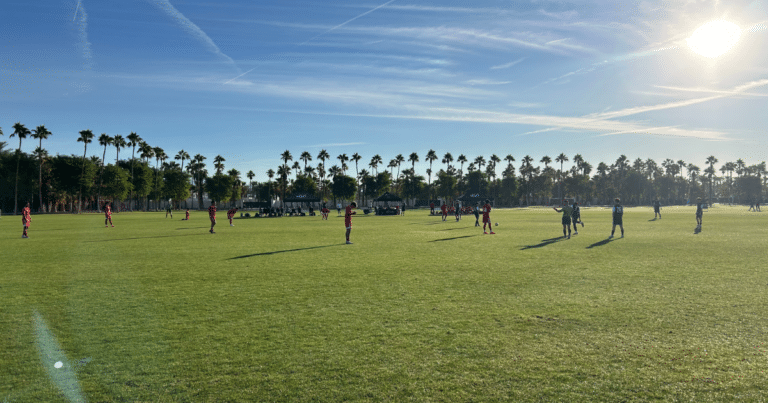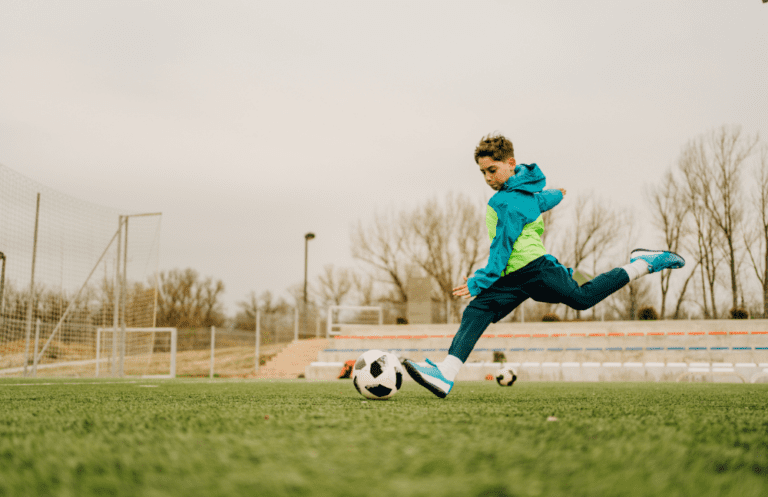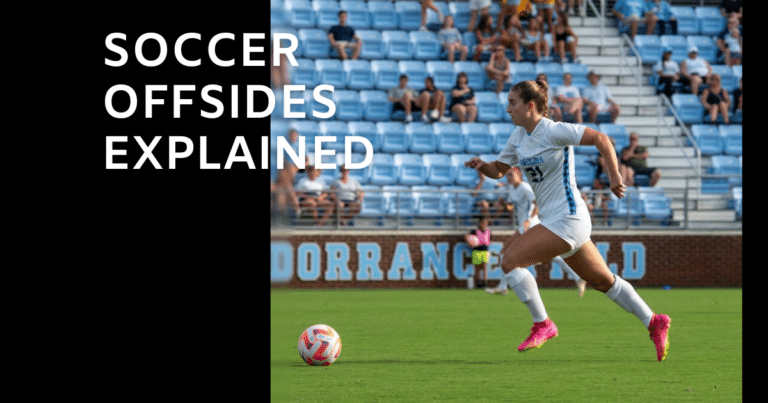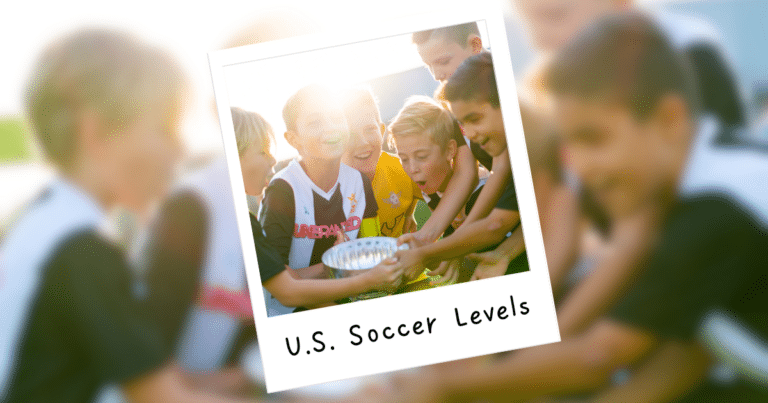A Beginner’s Guide to Soccer
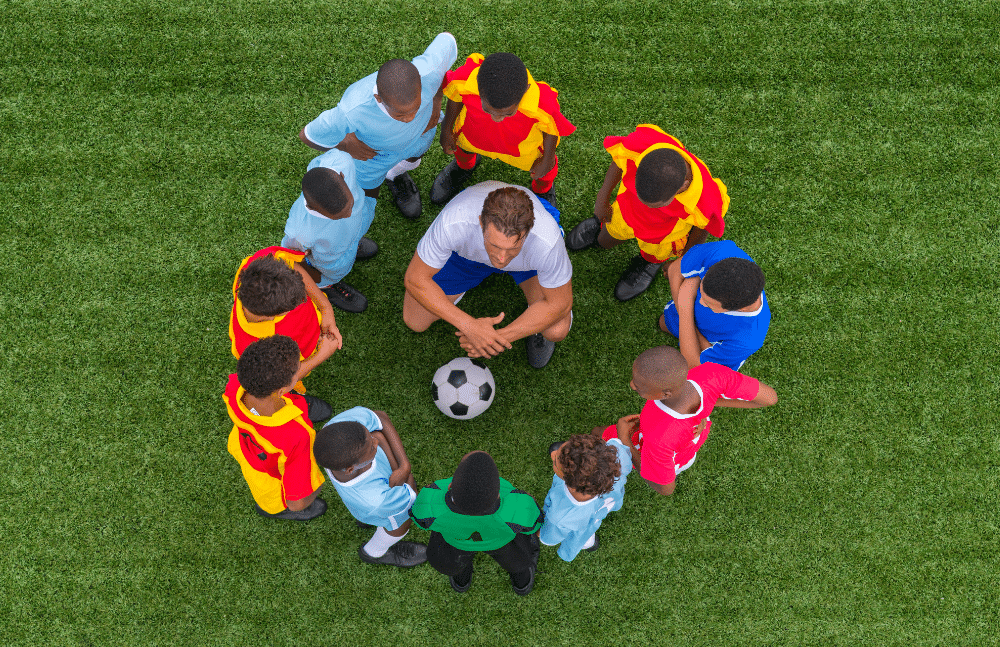
We love everything about soccer! I think you can tell from this site 🙂
I love coaching and watching kids develop into confident players. There is something experiencing progress on the field that translates into life later.
The game of soccer is simple in concept but it requires skills, strategy, and teamwork for a player to be effective on the field.
Learning the basic rules of soccer and improving your skills through consistent practice is essential. This beginner’s guide will help you understand the very basics of the game we call soccer!
What is the Objective of Soccer?
The objective of soccer is simple – to score more goals than the opposing team!
You probably knew that already.
A goal is scored when the ball crosses the goal line between the goalposts and under the crossbar. The team with the most goals at the end of the game wins.

Sometimes there is no winner. Keep in mind that soccer games can end in a tie!
The Soccer Field
The soccer field is rectangular and typically measures between 100-130 yards in length and 50-100 yards in width. The field is divided into two halves, with each team defending one half.

There is a center circle in the middle of the field where the game starts, and there are two penalty areas at each end of the field.
Depending on field availability, some programs will split the fit and play two youth games going from sideline to sideline.
What Are the Basic Soccer Rules?
Although it is not necessary to master all aspects of soccer (yet), you should understand the basics.
It’s also the parents’ and coaches’ responsibility to help teach about the fundamental rules and guidelines that players should adhere to.
You Can’t Use Hands
This is pretty obvious to those that have been in the game for a while but kids love to pick stuff up.
The only player who can touch the ball is the goalkeeper. The only time a field player can touch the ball is when it goes out of bounds and a throw-in is awarded.
Outside of that, players need to play the ball with their feet.
Also, keep in mind that shoulders are legal but anything from the arm down is not. For example, a player can bump shoulders with their opponent to try to win the ball.

On the other hand, when a player extends their arm to push an opponent then the referee will blow their whistle and award the other team a free kick.
Throw-Ins
You or a teammate can take a throw-in when the ball goes out of bounds by the opponent.
Throw-ins require both hands to hold and throw the ball over their head. Once the ball is on the field, you can play it with your feet.
Here’s an example of a throw in.
Taking Goal Kicks and Corner Kicks
Players are awarded free kicks if the following happens…
- Goal Kick: A free kick that is awarded to the defending team when the offensive team touches it last before it crosses the end line.
- Corner Kick: When the ball goes over the end line and is last touched by the defending team. Corner kicks are considered “direct kicks” and can be scored with or without another player touching it first.
Learn about the differences between a direct and indirect free kick.
Fouls
A referee monitors the entire game and ensures all players play safely.
A player’s responsibility is to simply play the game of soccer and avoid pushing, kicking, jumping, tripping, striking, or holding an opponent.

Otherwise, you will commit a foul, and as a result, the referee will award the opposing team a free direct kick.
If the foul occurs within the penalty box, the referee may give you a yellow card (this rarely happens at the youth level but we’ve seen it happen once or twice) and award the offensive team a penalty kick.
Soccer Positions for Beginners
Soccer positions depend on various factors, such as the players’ age group and competition level.
For example, young players should try almost every role and learn about each position. This allows the youth player to taste certain positions and choose one that best fits their skills.

A goalkeeper’s job is to block the shots from the offensive team and defend the goal. Likewise, defenders protect the ball from reaching the goal box.
Defenders, unlike goalies, perform on the field, not in the goal box. However, they can defend the goal during corner kicks from the offensive team.
Midfielders get the ball from one side of the field to the other and form a link between the forwards and defenders.
Forwards are crucial players on a youth soccer team who play aggressively and tactically to create goal-scoring opportunities.
Final Thoughts
Like any other sport or skill in life, the best way to learn something is to experience it first-hand.
There is no substitute for picking up the ball and playing. To start, joining a rec or travel team in your town is a great way to get familiar with the sport.
Once you get a good feel for the game and you want more, players will often find a soccer club in their area to play more competitively. This move also extends the season from just fall to fall, winter, and spring.
I can tell you from personal experience, learning and getting better at soccer will open up doors for you!
Frequently Asked Questions
Any age! Soccer is such an easy sport to start learning. Whether your child is 3 or 13, if they show interest in it, they should start learning how to dribble, pass, and shoot.
You’ll need to figure out which season the other sports are in. For example, a child can play soccer and basketball because they are in different seasons. Soccer is primarily a fall sport so sports like football, flag football, and cross-country could conflict.
Having a growth mindset. Soccer is a sport where players can get better over time but it won’t happen overnight. Understand that it will take practice to get better. From here, work on your foot skills first then passing and shooting.

Written By: Beau Bridges
Beau is the founder of SoccerNovo, dedicated to helping players and parents navigate the youth soccer landscape. As a former youth coach and soccer parent, he shares insights on player development, recruiting, and the ever-evolving soccer scene in the U.S.
Let’s connect


